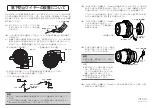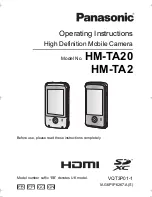
Users Manual Area Scan Cameras SVSGigE
Page 21
Users Manual –evo1050, evo2050, evo2150, evo4050, evo4070, evo8050 and evo12040
© SVS-VISTEK GmbH
Software triggered and using PC
The frame rate is determined by the number of Software TRIGGER pulses
generated inside the PC per time. With each “Software pulse” the camera
will readout a frame. The Exposure time is set as in free running mode. Ex-
posure time can be changed online during operation.
Software triggered operation should only be used when latencies
are considered as neglectable !!!
•
Frame rate: It allows to alter the frame rate between 1 and the specified maxi-
mum value.
•
Exposure: The exposure time can be set in µsec. The min exposure time is
about 50 µsec (depending on the camera type and speed). The longest is about
several seconds (triggered modes). Due to the internal timing of the camera
the program will adjust the values to the appropriate values.
•
Acquisition control (Start / Stop)
•
Single capture button (Snap)
•
Exposure (enter values > 2 sec. [2..85 sec.] into the Edit filed)
•
Exposure delay
•
Trigger polarity (positive/negative)
•
Single capture button: Takes a single shot of the actual scene
•
Inter-packet delay
The inter-packet delay has impact on a camera’s bandwidth usage. A setting of an in-
ter-packet delay of zero will send all image packets as fast as they are available de-
pendent on the camera’s pixel clock, e.g. at 50 MHz. This is the preferred setting
when operating a single camera on a network interface.
In case of multiple cameras or other devices working on the same physical network it
might be desirable to send the packets of a camera’s streaming channel with a certain
inter-packet delay in order to allow multiple cameras or devices to share a given net-
work bandwidth.
NOTE: The inter-packet delay should be below the value which would de-
crease the frame rate.
















































